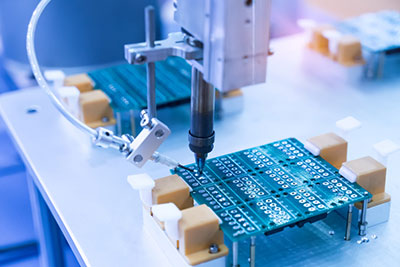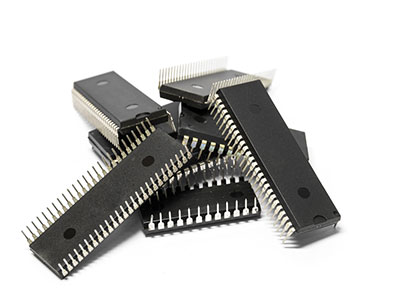Have you ever wondered about mechanisms microphones employ to bring out various sounds? Microphones convert sound energy into electrical signals. However, different types of microphones use varied methods in the conversion process.
In our case today, we'll discuss electret condenser microphones. The electret microphone has existed since 1961 and works on an electrostatic principle; our scope of interest details application types, among others.
Contents
- What is an Electret Microphone?
- Electret Microphone Type
- Front electret microphone
- Back electret microphone
- Foil electret microphone/ Diaphragm-type microphone
- Electret Microphone Working Principle
- Electret MIC internal structure
- The Electrostatic Principles Behind the ECM Transducer
- MIC capacitance calculation
- The Impedance Converting Transistor
- Microphone output calculation
- Power supply principle
- Application of Electret Microphone
- Typical ECMs include;
- Summary
What is an Electret Microphone?
An electret microphone or electret condenser microphone (ECM) is an electrostatically working capacitor-based microphone.

(electret condenser microphone)
Its function is to eradicate the need for a polarizing power supply since it uses a permanently charging material.
Special Offer: Get $100 off your order!
Email [email protected] to get started!
Electret Microphone Type
You can determine the type of electret microphone by considering its electret charging material. As such, there are three electret types.
-
Front electret microphone
It has no backplate. Instead, the mic capsules and the diaphragm's inside surface form the capacitor. Then, manufacturers fix the electret film to the front cover inside the mic. Finally, they connect the metalized diaphragm to the FET input.
-
Back electret microphone
It has a permanently charged capsule because manufacturers fix the stationary backplate (not the diaphragm) to its electret material. In that way, the diaphragm accuracy and the electret's durability increase as it is now immobile.
-
Foil electret microphone/ Diaphragm-type microphone
Instead of having a different diaphragm/front plate coated with electret film, a foil electret mic has its electret material as its diaphragm. Despite a foil electret being the most common type, it has the lowest quality, and it is because electret films, as diaphragms, perform poorly.
Note:
Electret microphones lack polarizing voltage, and instead, they have integrated preamplifiers that need power (assumed as bias or polarizing force). Also, the preamplifier receives phantom powering in the studio and sound reinforcement applications.
Further, we can classify project-grade and consumer electronic ECMs based on their connector types. For example, we have terminal-type, wire-type, and pin-type microphones.
Electret Microphone Working Principle
Electret MIC internal structure
The diagram below shows an ECM capsule structure. Even though not indicated, it also has a JFET in the middle section that acts as the impedance converter.
- Sound wave
- Diaphragm
- Backplate
- Battery
- Resistor
- Audio signal
- Electret (between the diaphragm and backplate).
The Electrostatic Principles Behind the ECM Transducer
The electrostatic principle of an ECM gives the basis of its functionality.
Explanation as follows;
First, the capsule is generally a parallel-plate capacitor with a stationary backplate and movable front plate (membrane/capsule diaphragm).
Moreover, the capacitor must maintain a constant charge between the backplate and diaphragm to function correctly.
Since the capsule has a fixed charge, we can use the formula below to understand its works;
Q = C.V
Q = Fixed electrical charge
C = Capacitance
V = Potential difference or Voltage level across the electrodes/plates
From the formula, a change in Capacitance is inversely proportional to any change in voltage. In other words, the Capacitance of the capacitor should oscillate within its setpoint to produce an AC voltage mic signal.
MIC capacitance calculation
The electret has a fixed charge C. To alter their Capacitance within a capsule, the formula below will apply;
C = Ɛ0 (A/d)
Whereby,
A = surface areas of plates.
d = distance between plates.
C = Capacitance of parallel-plate capacitor.
Ɛ0 =dielectric constant
From the formula, the area of plates and dielectric constant (stationary diaphragm) are two constants. Moving the diaphragm changes the distance of the container while also causing a variation in sound pressure levels.
All in all, sound waves at the diaphragm produce a coinciding mic signal.
The Impedance Converting Transistor
Unfortunately, ECM capsules have an issue of extremely high impedance at their output. They should, thus, be in a position to maintain high impedance to prevent leaking of stored charge crossway the plates.
An impedance converter (a JFET) effectively removes audio signals from an ECM capsule.
Gate (G) is the high-impedance input, and it receives an output signal from the ECM capsule without degrading it.
The power supply of JFET is from an external power supply such as DC biasing or phantom power. It subsequently causes an electric current to flow through the source (S) and drain (D) terminals. The wind has low impedance and hence, can be the final mic output.
In summary, input signals can control output signals. Therefore, a high-impedance call through the gate-source JFET terminals can control the low-impedance motion at the source-drain terminals.
Microphone output calculation
A signal-to-voice ratio (SNR) determines the desired electrical output signal level instead of the unwanted calls.
Power supply principle
Despite ECMs operating as permanently charged capsules, they still are active microphones. That's to say, ECM impedance converters may still need some power to work efficiently. The power supply can either be DC biasing, phantom power, or a device's same battery.
Application of Electret Microphone
An electret condenser microphone so far has a wide variety of applications. But first, let us consider the examples before listing the use areas.
Typical ECMs include;
- Consumer electronics like mobile phones,
- Measurement microphones,
- Professional medical devices such as hearing aids,
- Student condenser microphones, and
- Film microphones like lavalier mics or shotgun mics.
Areas of application
- Recording sessions for instrumentals and voice since it's an omnidirectional microphone,
- Live performances like band performances or stand-up comedy,
- TV and radio broadcasting,
- Mobile devices, and
- Hearing impairments.

(a child using hearing aids).
Summary
To conclude, electret condenser microphones are sensitive and compact. Additionally, they can capture and then respond to sound vibrations from a 360° angle. Hence, that makes them the most common type of microphones in current use in electronic circuits.
Till this point, we hope that you've gained much from the post.
Do you still have any questions? Please do contact us.
Special Offer: Get $100 off your order!
Email [email protected] to get started!







